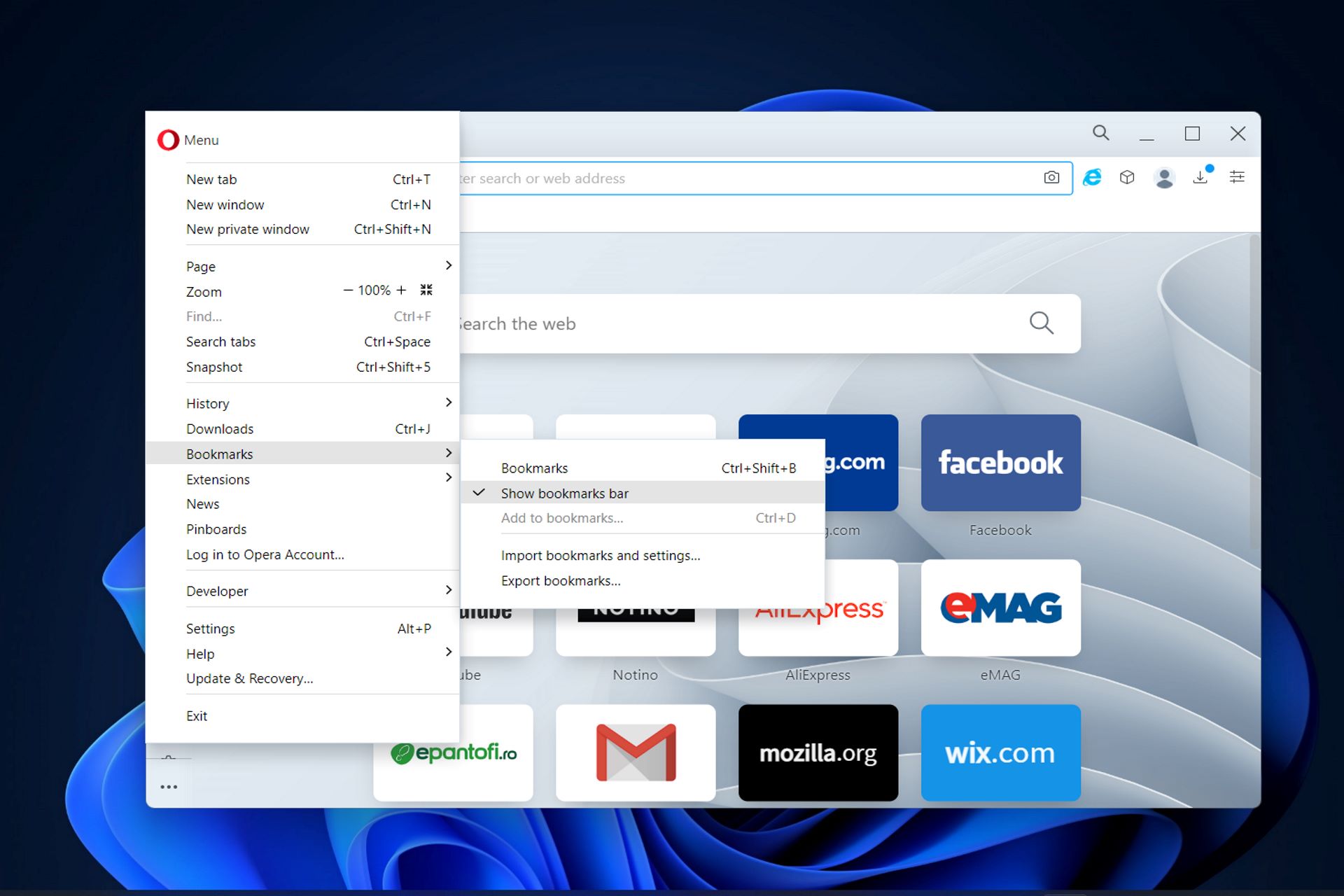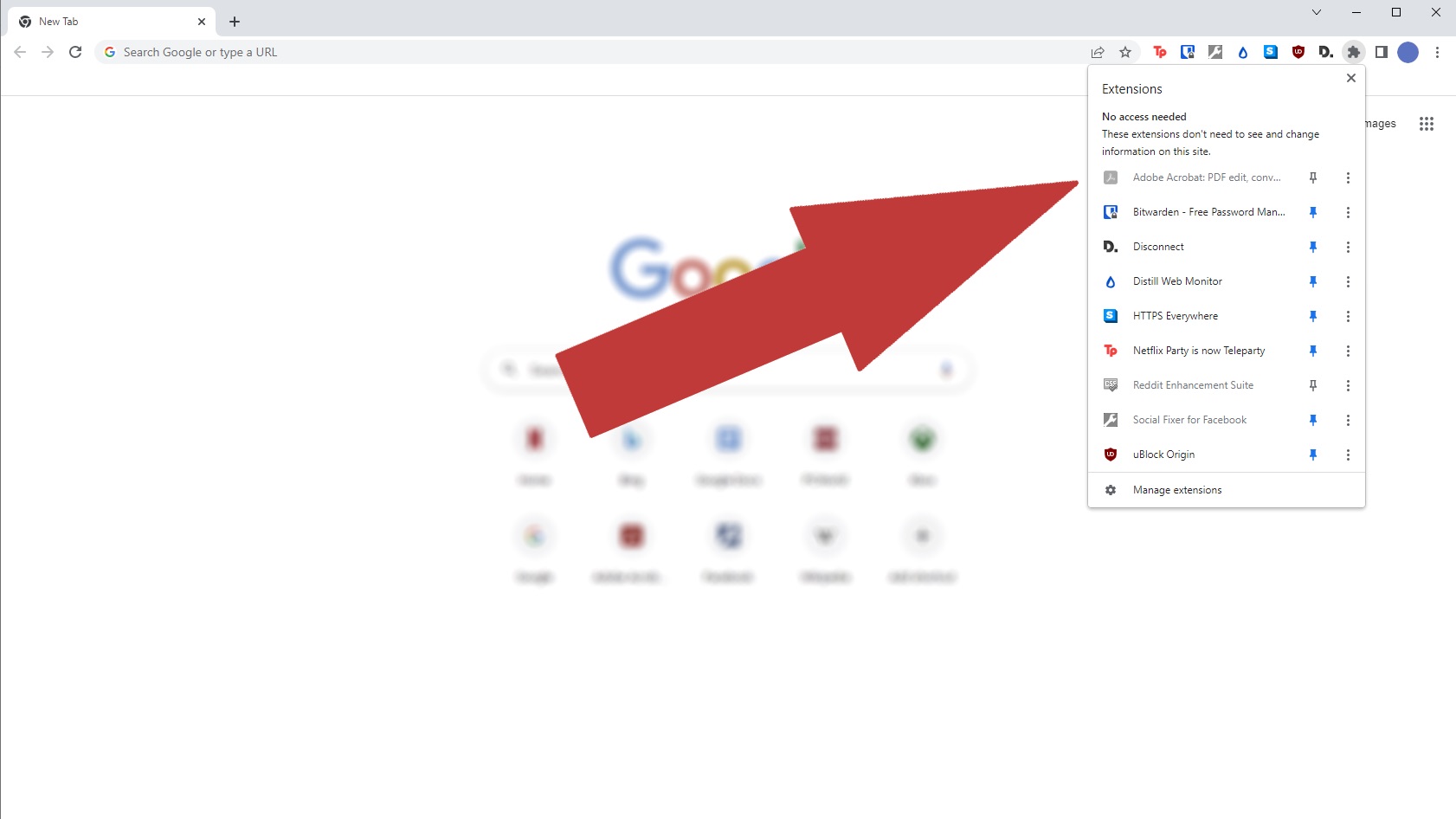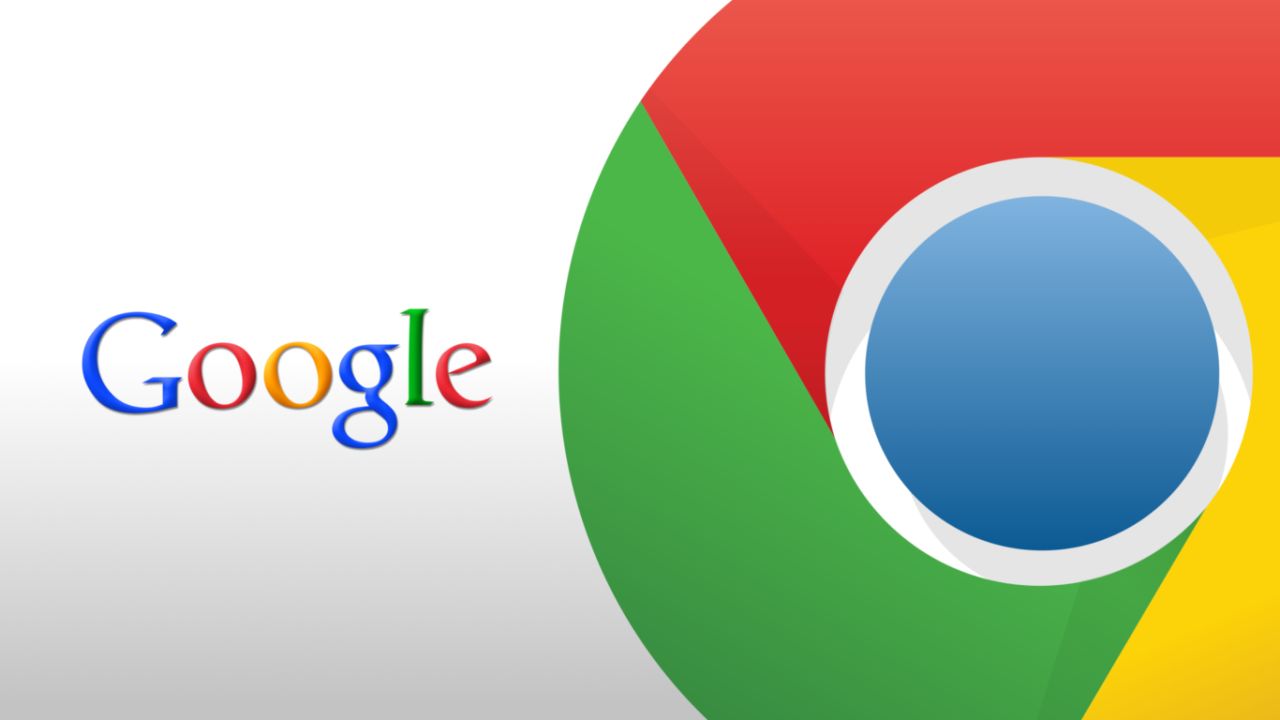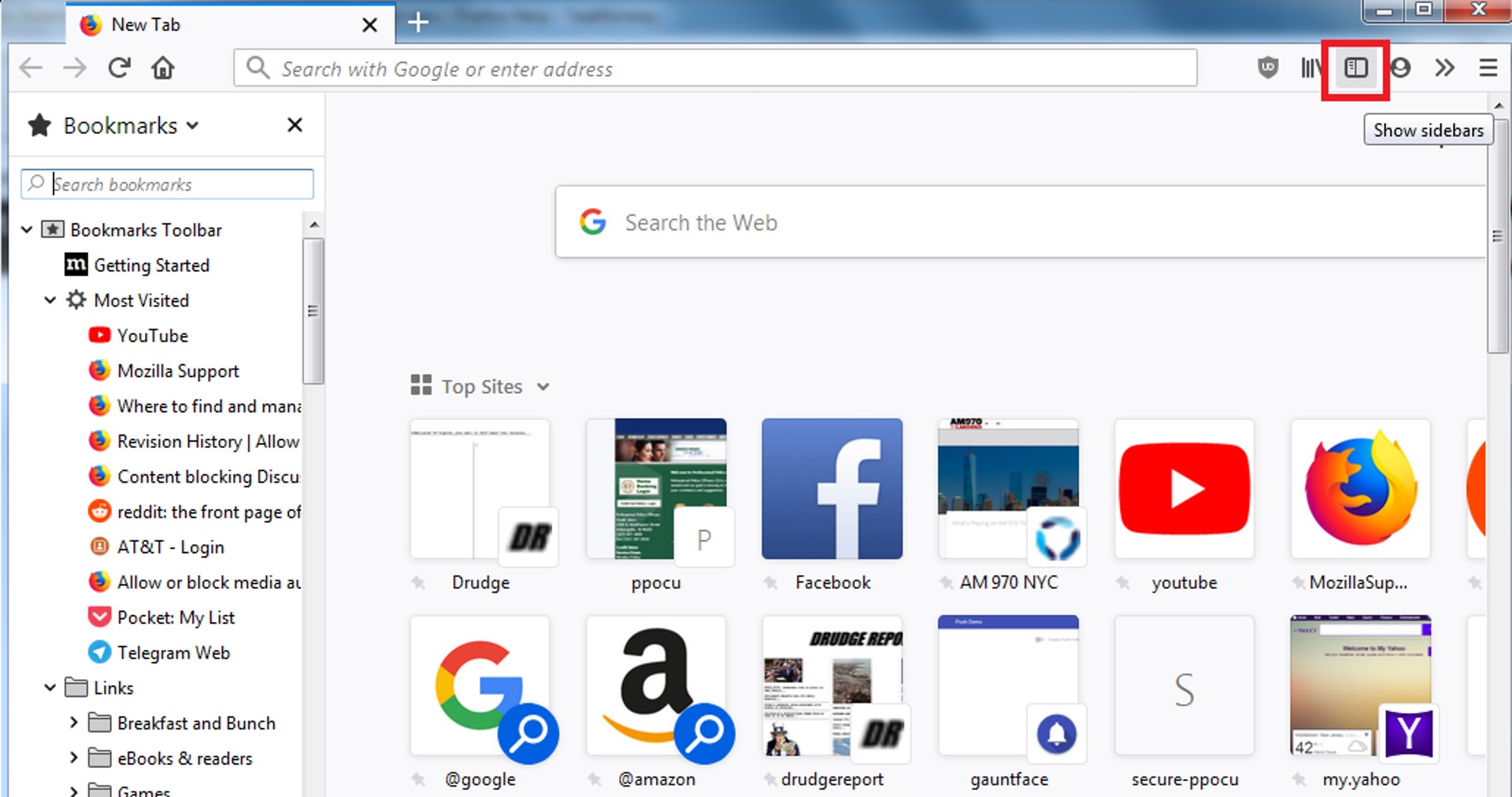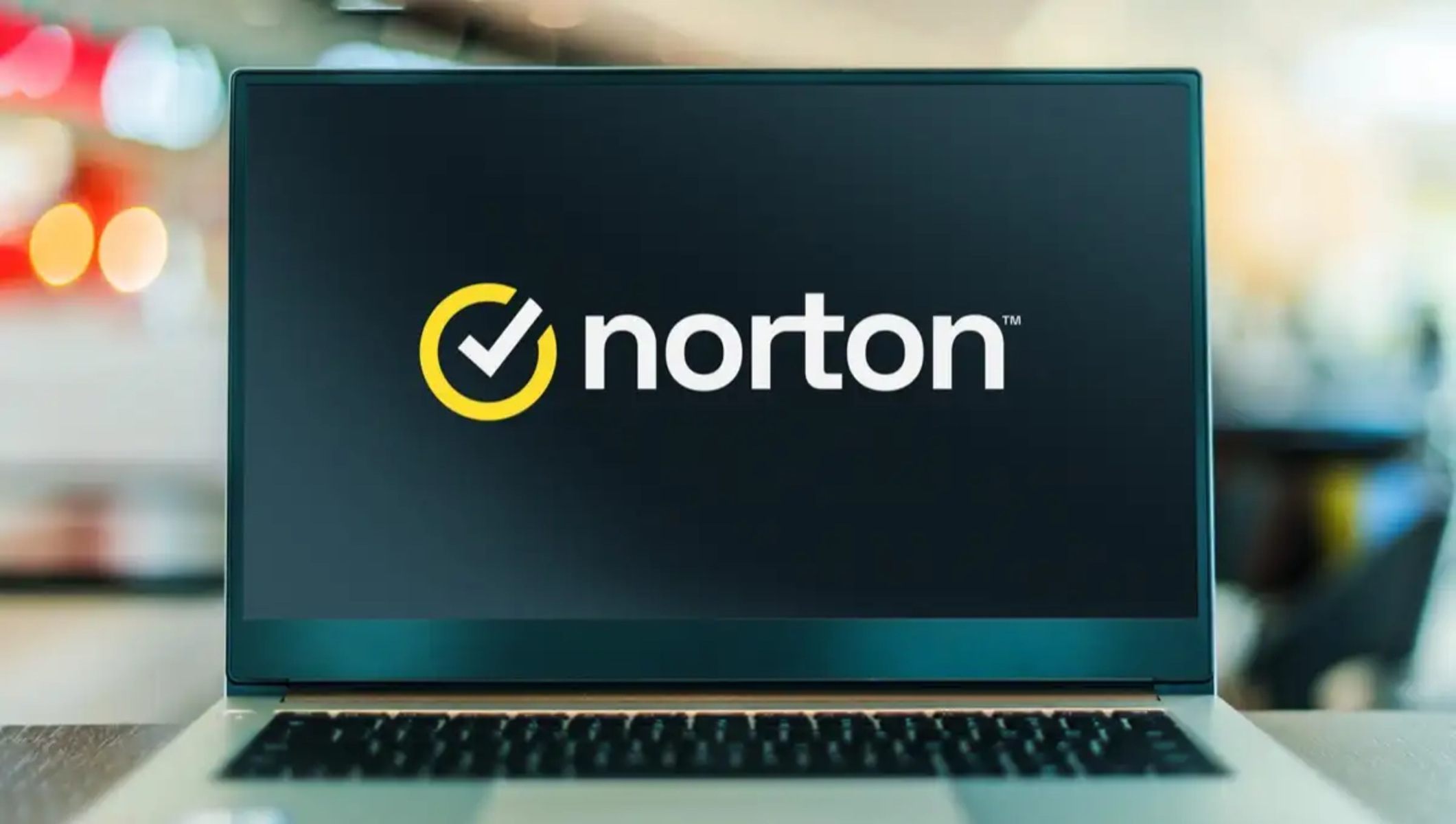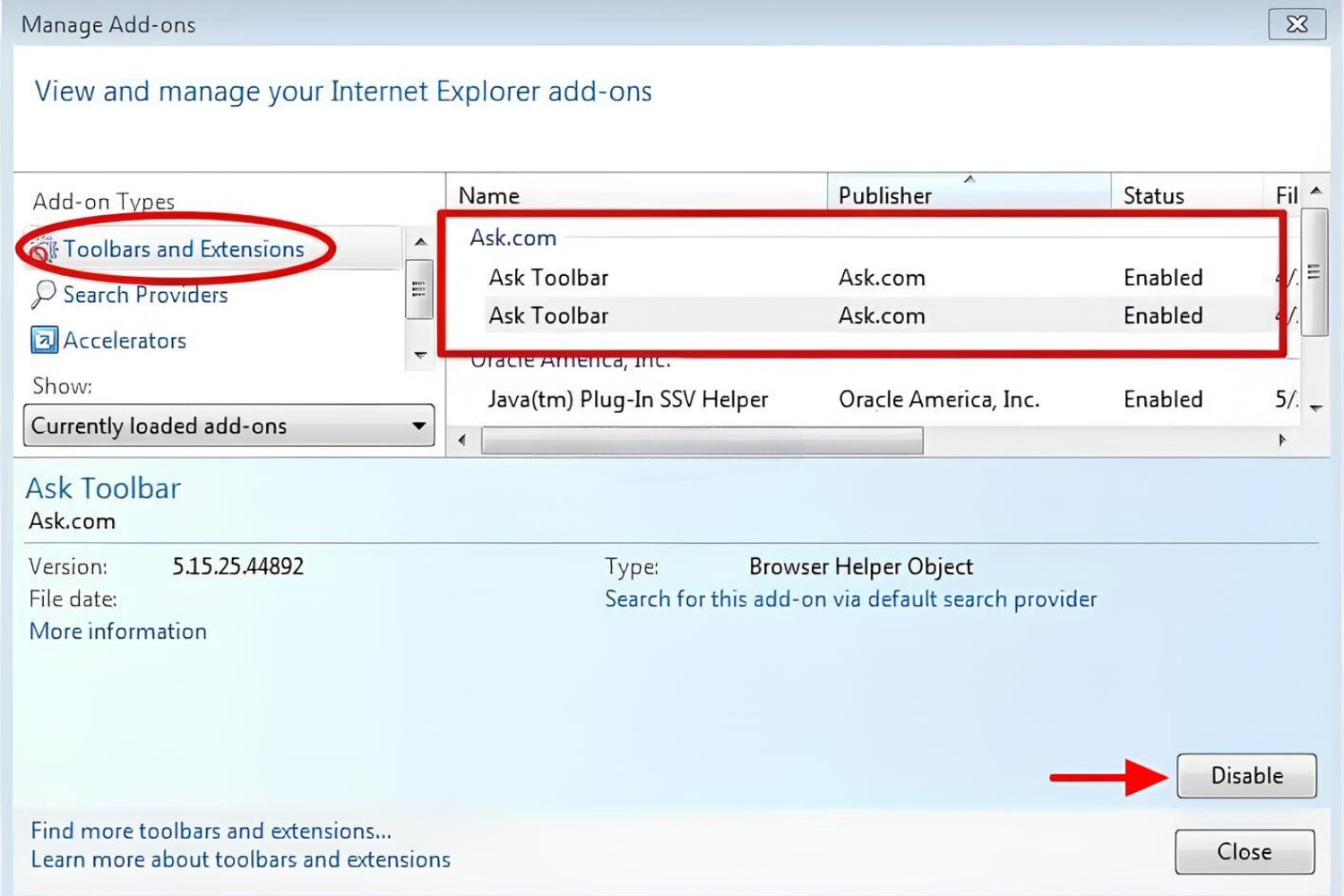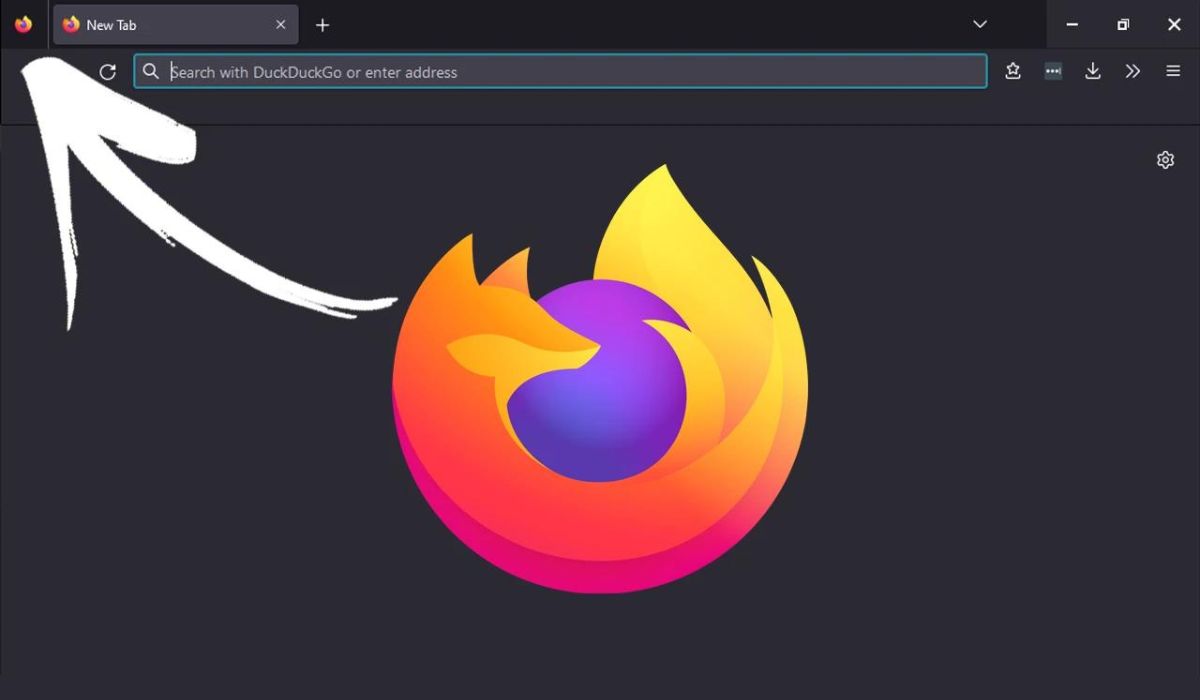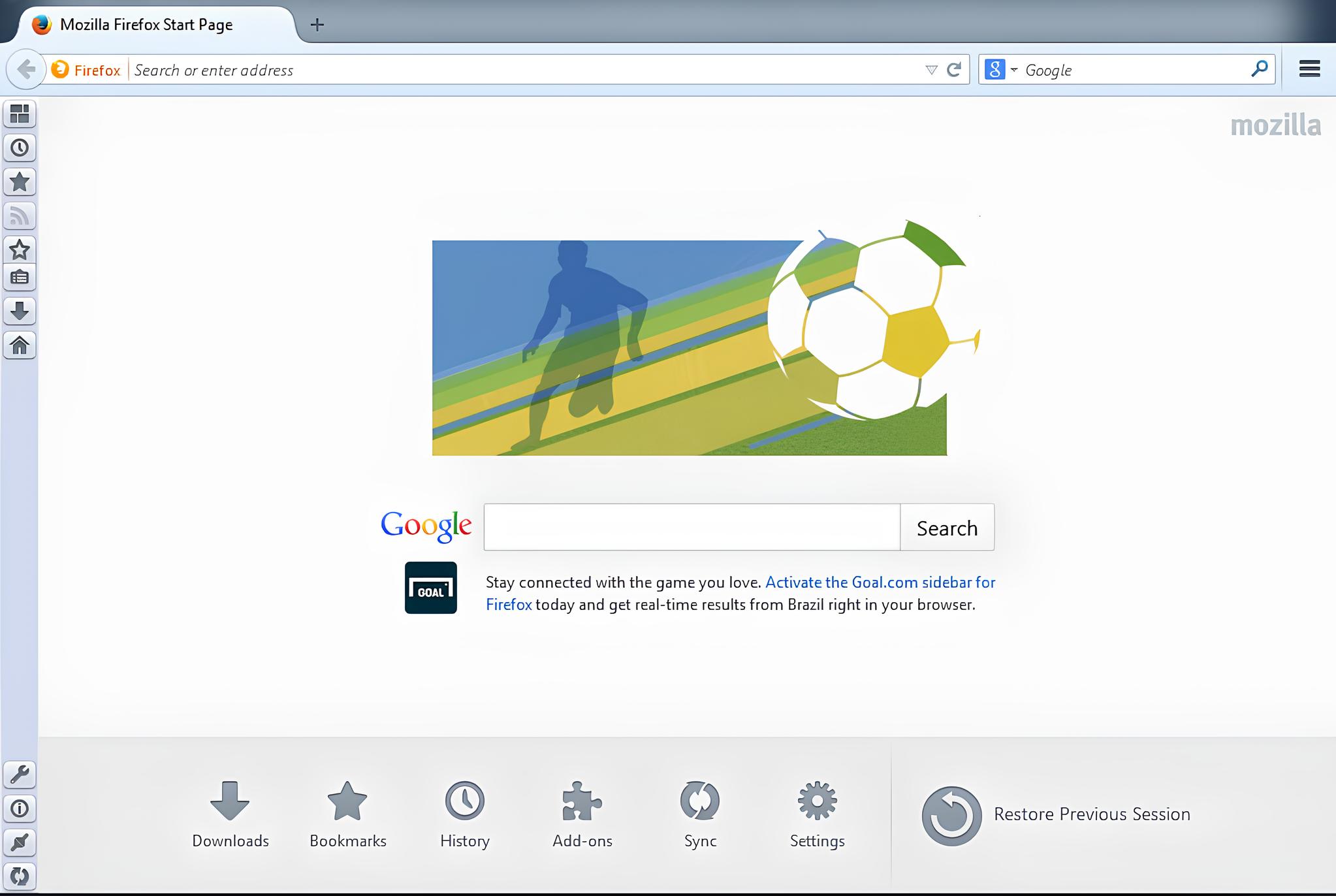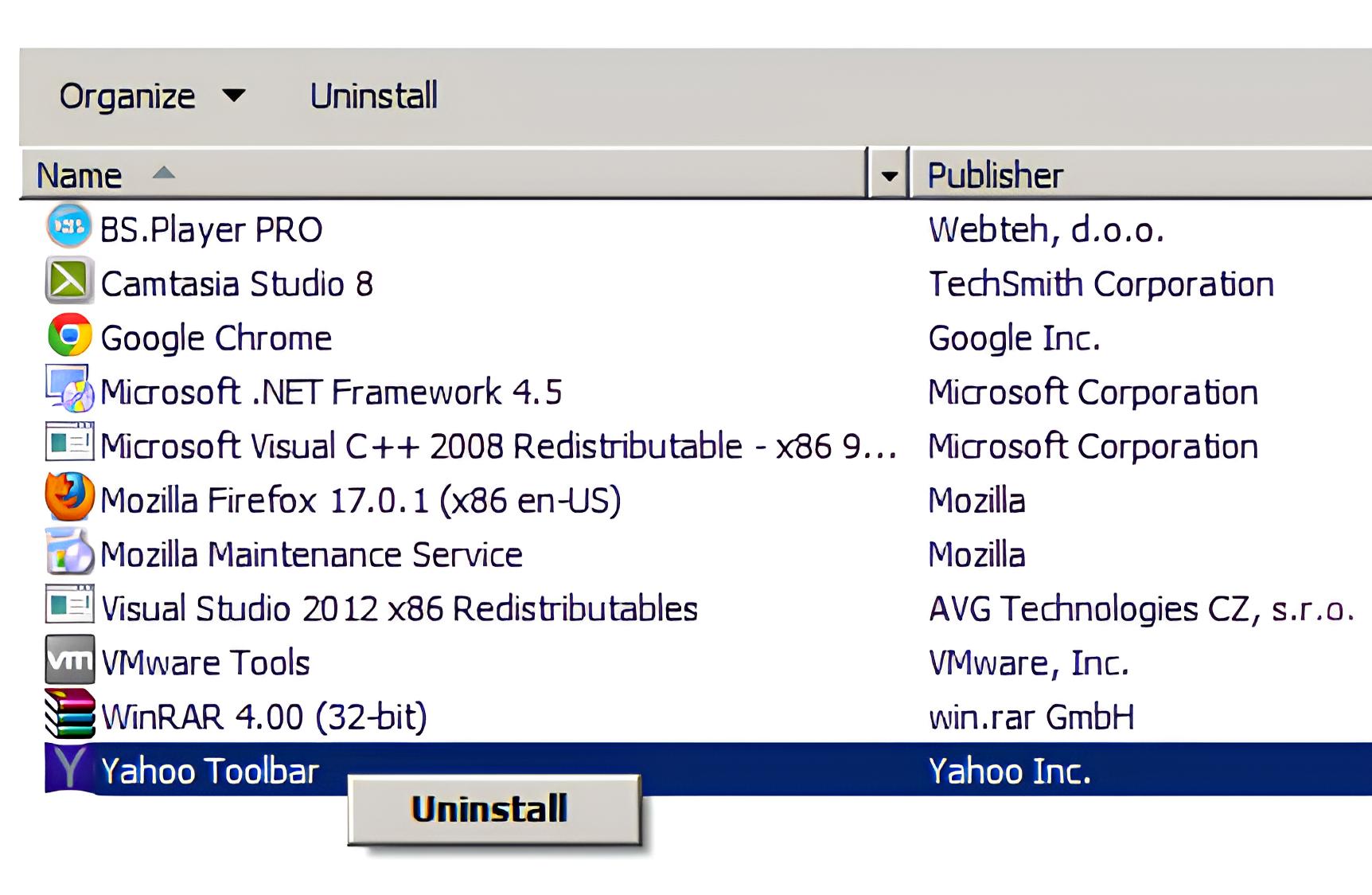What is a browser toolbar?
A browser toolbar is a customizable feature that adds additional functionality and convenience to your web browsing experience. It is a horizontal strip located at the top of your browser window, just below the address bar. The toolbar typically contains buttons and icons that enable quick access to various tools, features, and shortcuts.
Toolbar extensions can come pre-installed with your browser, such as the Google Toolbar for Chrome, or they can be added by the user. These extensions often provide quick links to commonly used websites, search boxes, bookmarks, and other utilities. They can also include browser-specific tools like page translation, email notifications, social media sharing, and ad-blocking functions.
One of the primary advantages of browser toolbars is that they allow for easy access to frequently used functions, saving time and effort. With just a click, you can perform tasks like searching the web, checking your email, navigating to favorite websites, or managing bookmarks. Toolbars also offer a more streamlined and clutter-free browsing experience by removing the need to constantly switch between tabs or open multiple windows.
Beyond the default features, most browser toolbars can be customized to suit your preferences. You can add or remove buttons, rearrange the order of icons, and even install third-party extensions to expand the toolbar’s capabilities. This flexibility allows you to personalize your browsing experience and create a toolbar that aligns with your specific needs and interests.
It is worth noting that while browser toolbars can enhance your browsing experience, they can also impact performance if too many or resource-heavy extensions are installed. It’s important to regularly review and manage your toolbar extensions to ensure optimal functionality and avoid potential conflicts or slowdowns.
In the next section, we will explore why you might not be able to see your browser toolbar and how to resolve the issue.
Why can’t I see my browser toolbar?
If you can’t see your browser toolbar, there are several possible reasons for this issue. Here are a few common causes and solutions to help you resolve the problem:
1. Hidden toolbar: Sometimes, the toolbar may be set to hide automatically. This can happen if you inadvertently clicked on an option or if a toolbar extension has modified the settings. To show the toolbar, simply press the corresponding key combination. For example, in Chrome, pressing “Ctrl+Shift+B” will toggle the bookmark bar’s visibility.
2. Toolbar extension conflict: Conflicts between toolbar extensions can lead to the disappearance of the toolbar. If you recently installed a new extension, it’s possible that it is conflicting with another extension or causing compatibility issues. Try disabling or removing the recently added extension to see if the toolbar reappears.
3. Browser update or reset: Some browser updates or settings resets can reset the toolbar configurations to their default settings, resulting in the toolbar disappearing. In such cases, you can try restoring the toolbar manually. Look for options like “Customize toolbar” or “Show toolbar” in your browser’s settings menu and make sure the toolbar is enabled.
4. Full-screen mode: If your browser is in full-screen mode, the toolbar may be hidden to provide a more immersive experience. To exit full-screen mode and reveal the toolbar, press the F11 key on your keyboard or check the browser options or settings to disable full-screen mode.
5. Toolbar-related error: In rare cases, a browser or toolbar-related error can cause the toolbar to disappear. Clearing your browser’s cache and cookies, restarting your computer, or reinstalling the toolbar extension can help resolve any underlying issues and restore the toolbar.
If none of these solutions work, there may be a more complex issue at hand. Consider reaching out to the browser’s support team or searching online forums for further assistance.
In the next section, we will discuss how to show the browser toolbar if it is hidden or missing.
How to show the browser toolbar
If your browser toolbar is hidden or missing, there are several methods you can try to show it again. Here are some steps you can follow to display the toolbar:
1. Utilize keyboard shortcuts: Many browsers have keyboard shortcuts that allow you to toggle the visibility of the toolbar. Pressing the appropriate key combination will usually enable or display the toolbar. For example, in Firefox, pressing “Alt+V” followed by “T” will show the toolbar.
2. Access toolbar settings: Most browsers have a customization or settings menu where you can enable or disable various toolbar features. Look for options like “Customize toolbar” or “Show toolbar” in your browser’s settings menu. You may find a list of available toolbars that you can select or deselect to show or hide them.
3. Reset toolbar settings: If the above methods didn’t work, you can try resetting the toolbar settings to their default configuration. Look for a “Reset toolbar” or “Reset to default” option in your browser’s settings or customization menu. Keep in mind that this will remove any customizations you have made to the toolbar, so make a note of any important settings or extensions before proceeding.
4. Check extension settings: If you have installed any toolbar extensions, it’s possible that their settings may be affecting the visibility of the toolbar. Open the extension settings menu and ensure that the toolbar is enabled or selected to be shown. Sometimes, an extension might have additional options to control when and how the toolbar is displayed.
5. Update or reinstall the toolbar extension: If you are experiencing issues with a specific toolbar extension, updating it to the latest version or reinstalling it can help resolve any compatibility or configuration problems. Check the browser’s extension marketplace or official website for updates or reinstall the extension from scratch.
By following these steps, you should be able to show your browser toolbar again. Remember to customize it according to your preferences by adding or removing buttons, rearranging icons, and exploring additional toolbar extensions.
In the next section, we will address some common issues that you might encounter with the browser toolbar and provide troubleshooting tips.
Troubleshooting common issues with the browser toolbar
While browser toolbars can greatly enhance your web browsing experience, they may encounter occasional issues that can affect their functionality. Here are some common problems you might encounter with your browser toolbar and troubleshooting tips to resolve them:
1. Toolbar unresponsiveness: If your toolbar becomes unresponsive or stops functioning properly, try restarting your browser. This simple step can often resolve temporary glitches or conflicts that may be causing the issue.
2. Missing buttons or icons: Occasionally, you may notice that buttons or icons on your toolbar have mysteriously disappeared. First, check your toolbar’s customization options to ensure that the missing items haven’t accidentally been moved or removed. If they are not there, reinstalling the corresponding extension or updating your browser may restore the missing buttons.
3. Toolbar extension conflicts: Conflicts between different toolbar extensions can cause instability and affect the overall toolbar functionality. To troubleshoot this issue, disable all extensions and then re-enable them one by one while checking if the toolbar works properly. This process will help you identify any problematic extension that may be causing conflicts.
4. Toolbar display issues: Sometimes, the toolbar may not be displayed correctly due to browser or system settings. Adjust the screen resolution of your monitor to ensure that it is set to the recommended value. Additionally, check your browser settings to ensure that hardware acceleration is enabled, as disabling it can sometimes affect the display of the toolbar.
5. Toolbar not loading on startup: If your toolbar fails to load when you start your browser, try disabling any unnecessary or resource-intensive startup programs. These programs can sometimes interfere with the loading process. You can also check your browser’s settings to ensure that the toolbar is enabled to load at startup.
6. Toolbar compatibility with browser updates: Occasionally, after updating your browser to a newer version, some toolbar extensions may become incompatible, resulting in issues or the toolbar not working at all. In such cases, visit the extension developer’s website or the browser’s extension marketplace to check for updates or alternatives that are compatible with the latest browser version.
Remember to keep your browser and toolbar extensions updated to avoid compatibility issues. Regularly review your toolbar, remove any unnecessary extensions, and ensure that the remaining ones are from reputable sources.
If you continue to experience issues with your browser toolbar, you can seek assistance from the browser’s support team or browse online forums for further troubleshooting suggestions.
Now that we’ve explored troubleshooting common toolbar issues, let’s conclude this article with a summary.
Conclusion
Browser toolbars are valuable extensions that enhance your web browsing experience by providing quick access to various features and tools. They offer convenience, efficiency, and customization options to tailor your browsing environment according to your needs.
In this article, we discussed what a browser toolbar is and how it adds functionality to your web browser. We also explored potential reasons for the disappearance of the toolbar and provided troubleshooting steps to help you resolve the issue.
If you can’t see your browser toolbar, try utilizing keyboard shortcuts, accessing toolbar settings, or resetting the toolbar configurations. Additionally, check for conflicts with toolbar extensions and update or reinstall them if necessary. By following these steps, you should be able to restore and customize your toolbar according to your preferences.
We also addressed common issues you may encounter with the browser toolbar, such as unresponsiveness, missing buttons or icons, conflicts between extensions, and display problems. Troubleshooting these problems can involve restarting your browser, adjusting settings, disabling unnecessary startup programs, and ensuring compatibility with browser updates.
Remember, keeping your browser and toolbar extensions up-to-date is crucial for a smooth experience. Regularly review your extensions, remove unnecessary ones, and make sure the remaining ones come from reputable sources.
If you experience persistent issues with your browser toolbar, reaching out to your browser’s support team or referring to online forums can provide further assistance and solutions.
Now that you have a better understanding of browser toolbars and how to address common issues, you can enjoy a more streamlined and personalized web browsing experience.







